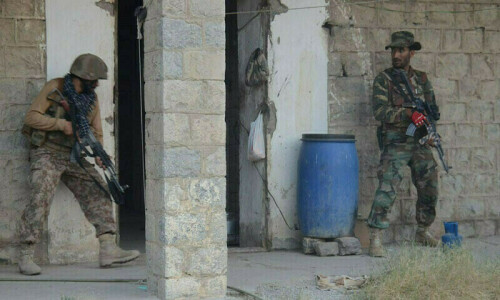Estimates are still being made to ascertain if the devastation wrought by this year’s flash floods is as extensive as caused by the deluge in 2010.
Whatever the conclusion, it was enough to underline that Pakistan is far from finding a fix for monsoon flooding, or from minimising loss of life and other damage.
Politicians, jihadists and even some so-called flood experts have found it convenient to blame an Indian conspiracy to submerge Pakistan instead of emphasising the poor level of preparedness for flooding on this side of the border.
For example, Jamaatud Dawa had this to say on the subject: “India has used water to attack Pakistan; we’re in a state of war. India’s water aggression should be taken to the United Nations Security Council.” JuD chief, Hafiz Saeed, was voicing the sentiments of many when he tweeted that “…Indian water terrorism is more lethal than its border violations”.
In a similar vein, Jamaat-i-Islami emir Sirajul Haq, who has been otherwise engaged in helping the PML-N and PTI build bridges to save the democratic set-up in the country, didn’t miss the opportunity to castigate India for exacerbating the flooding in the Chenab.
These are political statements which do not help those affected by the deluge. Nor are they likely to put pressure on the government to undertake the measures required to protect public life and property from flooding hazards in the years to come.
“The current floods have been generated by heavy monsoon downpours in the Chenab basin in the Himalayan region,” explained Jamaat Ali Shah, Pakistan’s former Indus Waters commissioner. “India doesn’t have any significant water storage facility on the river because of the Indus Waters Treaty with Pakistan, and its run-of-the-river hydropower projects like Baglihar could not possibly have worsened the floods coming from its territory into Pakistan.”
As far as the Jhelum is concerned, said Mr Shah, “the river receives barely one-fifth of its water from India; the rest of the flow is generated in Azad Kashmir.”
Nevertheless, he blamed India for its reluctance to share information on water flow in Pakistani rivers in spite of this being a requirement of the water treaty as well as a separate arrangement agreed upon after the super floods in 1988.
“Nor do the Indians agree on installing the telemetry system managed by a neutral authority to ensure that both countries get exact, real-time river data through satellite imagery that can help us take timely measures,” Mr Shah said. “In such a situation we need to increase our own capacity to correctly forecast floods to limit the losses and save lives.”
Experts such as Mr Shah believe flooding is the “most devastating natural hazard” in Pakistan. The 2010 deluge is said to have reconfirmed “extreme vulnerability” of its people and economy to seasonal flooding. Unfortunately, the government is yet to make flood management planning a national development policy goal.
Some effort has been put into building institutional infrastructure for flood hazard and disaster management over the decades. A Federal Flood Commission was created in 1977 and federal and provincial disaster management authorities established shortly after the devastating earthquake in 2005. But as Mr Shah pointed out, these organisations have not proved very effective in times of flooding because of the bureaucratic hold over them as well as lack of finances for building flood control infrastructure.
“We require a centralised organisation responsible for undertaking research studies on the causes of flooding and its impact, as well as what needs to be done to minimise economic destruction and prevent the loss of life,” noted Chaudhry Mazhar Ali, a retired Punjab irrigation official and researcher.
“Instead of blaming India, we must accept that we were not prepared for floods. Can anyone tell me what we have done to reduce the intensity of flooding after the 2010 deluge? Absolutely nothing,” he said. “When an emergency arises we spring into action to fire-fight it in an unplanned, unorganised manner because we are never ready for it. Once it is over, we go back to sleep until another crisis jolts us into engaging in yet another fire-fighting exercise.
Floods do happen. However, many countries have evolved integrated flood management and control strategies to limit the extent of damage to property and crops and to minimise loss of human life.
“If we want to limit the damage caused by flooding, we shall have to revise our entire flood management planning and policy,” observed Mr Shah. The government, he said, was required to implement both structural and non-structural measures for reducing the adverse impact of floods.
Structural flood management measures include the strengthening of flood control infrastructure like dykes, levees and embankments, the creation of floodwater diversion channels and storage, and increase in the capacity of barrages. Non-structural measures comprise improvement in flood forecasting and warning capacity, mapping of floodplains, formulation of evacuation plans, and changes in land use where possible.
As a senior Pakistan Meteorological Department official, not wanting to be named, put it: “The frequency of flash floods has increased in recent years and will continue to rise in future in the wake of the shifting monsoon zone caused by climate changes in the region. You cannot expect to control flooding. But you can control damage to life and property by being better prepared for it. For how long shall we continue to drown our people?”
Published in Dawn, September 19th, 2014















































